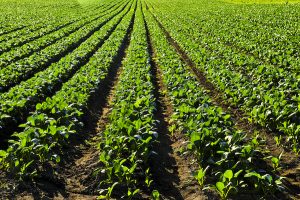Recent estimates from the United Nations predict the world will need around 60 per cent more food by 2050. Precision farming will be vital in meeting this demand. The use of machine vision in the Agri-food industry will play a crucial role in the advances being made in precision farming.
According to Dan Steere, CEO of Abundant Robotics, food production could be fully robotic in as little as ten years. “There’s major technologies coming that will make each part of farming more efficient, more productive, and hopefully healthier and less expensive.”
One of these advancements is the world’s first robotic apple picker. It is slated to launch later this year. As a matter of fact, the picker has been in development for the past five years. That may seem like a long time, especially in an age where technology adapts minute by minute. Though, in the world of apples, that’s not the case. Robotic pickers need highly advanced computer vision and fine-motor animation. Both of which have been slow to develop.
Apples aren’t as simple as they may seem. Each variety needs its own computer recognition process. A camera on top of the picker tells the machine if an apple is ready to be picked. “The vision has to both recognize fruit and it has to recognize whether it’s ripe or not in a fraction of a second,” says Steere. A Gala, for example, is ripe immediately after its green undertone changes completely to red—a nuance computers must be accurately trained to see. Apples aren’t as simple as they may seem. A ripe Gala, for instance, is red, but a ripe Granny Smith is green. So, each variety needs its own computer recognition process; more than 2,500 are grown in the United States.
As with the apple picker, a similar type of equipment is being used in technology that sorts cocoa, nuts, coffee cherries, and cardamom. With coffee cherries, farmers load up to 30 kilograms from one section of the field at a time. (Thirty kilograms of cherries hold is approximately 18,000 coffee beans.) The machine drops it through a visioning system where you can picture a waterfall of cherries falling. As they drop, the machine takes images of each cherry individually, analyzing color, size, density, defects, and signs of disease.
Camera’s on these types of picking machines require specific precision lens design and can incorporate CCD/CMOS lens assemblies, especially on applications that use smaller cameras. We also have a large selection of C-mount adapters and other accessories in stock to help you integrate our lenses with your system.
According to Professor Simon Pearson, from the University of Lincoln, ‘imaging technology is the backbone of precision agriculture, as DNA is to bioscience’. Precision agriculture is a real growth area. It does so much good; helps farmers make money and helps improve the environmental impact of agriculture.
In the UK, the government is funding a program to help transform food production. The program is led by Innovate UK and the Biotechnology and Biological Sciences Research Council, under the government’s Industrial Strategy Challenge Fund. The technologies that can be applied for agriculture can be split into crop-based production systems and livestock-based production systems. In recent years there’s been quite a bit of interest in both, and machine vision is applicable in both situations.
For the livestock systems, the Centre for Machine Vision at the Bristol Robotics Laboratory – under the University of the West of England (UWE Bristol) and the University of Bristol – has been working with dairy consultancy, Kingshay, to develop imaging technology to monitor dairy cows when they leave the milking parlor, in order to improve their welfare and productivity.
The system uses a 3D camera, which looks down at the animal as it walks underneath, so the cow doesn’t need to be stationary or held in a pen. The camera measures the volume and assumes the density of the animal, so the farmer can estimate its weight. It then scores the animal’s body condition on a scale spanning ‘very thin and feeble’ to ‘very fat’. The system is currently in situ on three farms.
Technology incorporating machinery like the apple pickers and the ability to monitor cattle is a logical next step when it comes to agriculture, and the strides being made to further production in the agri-food industry on a global scale.